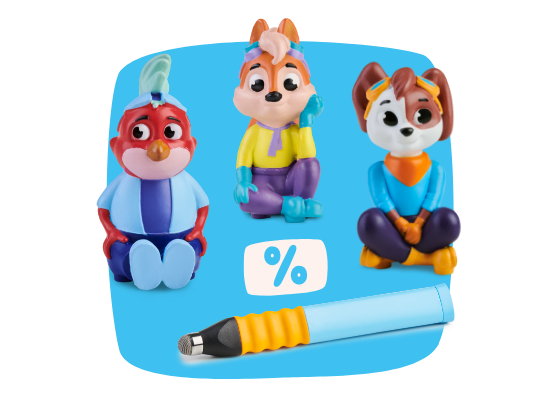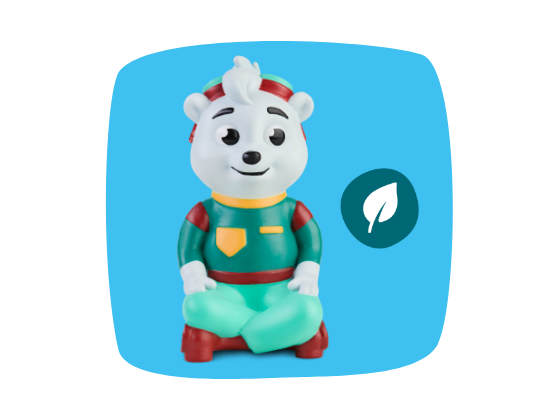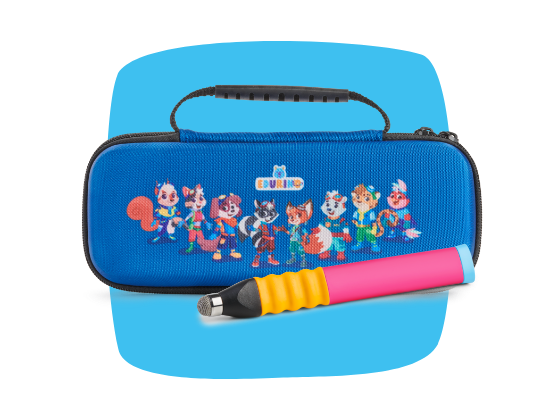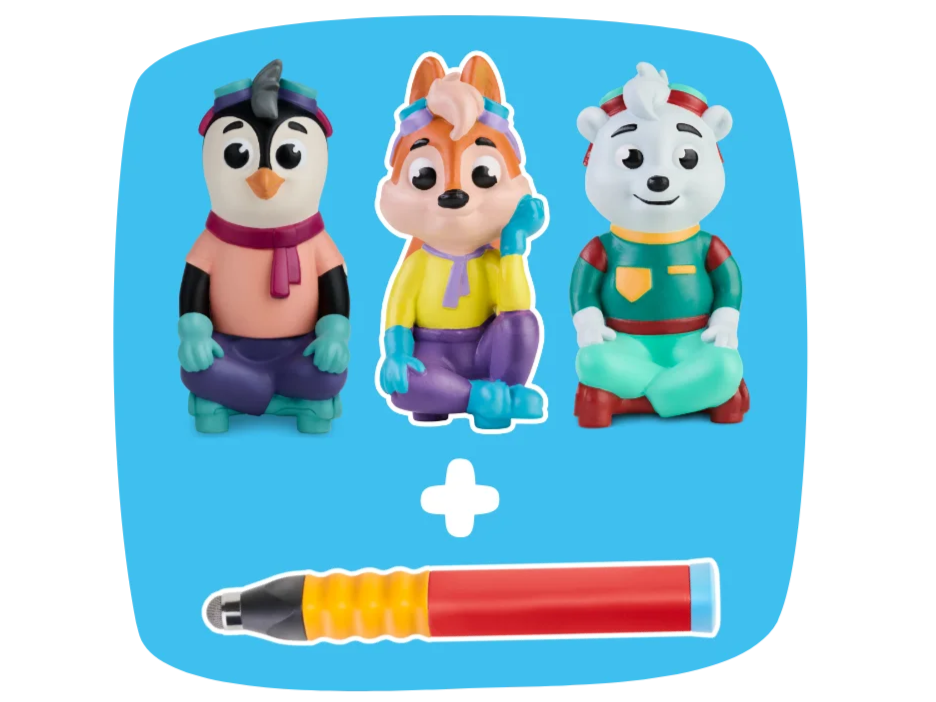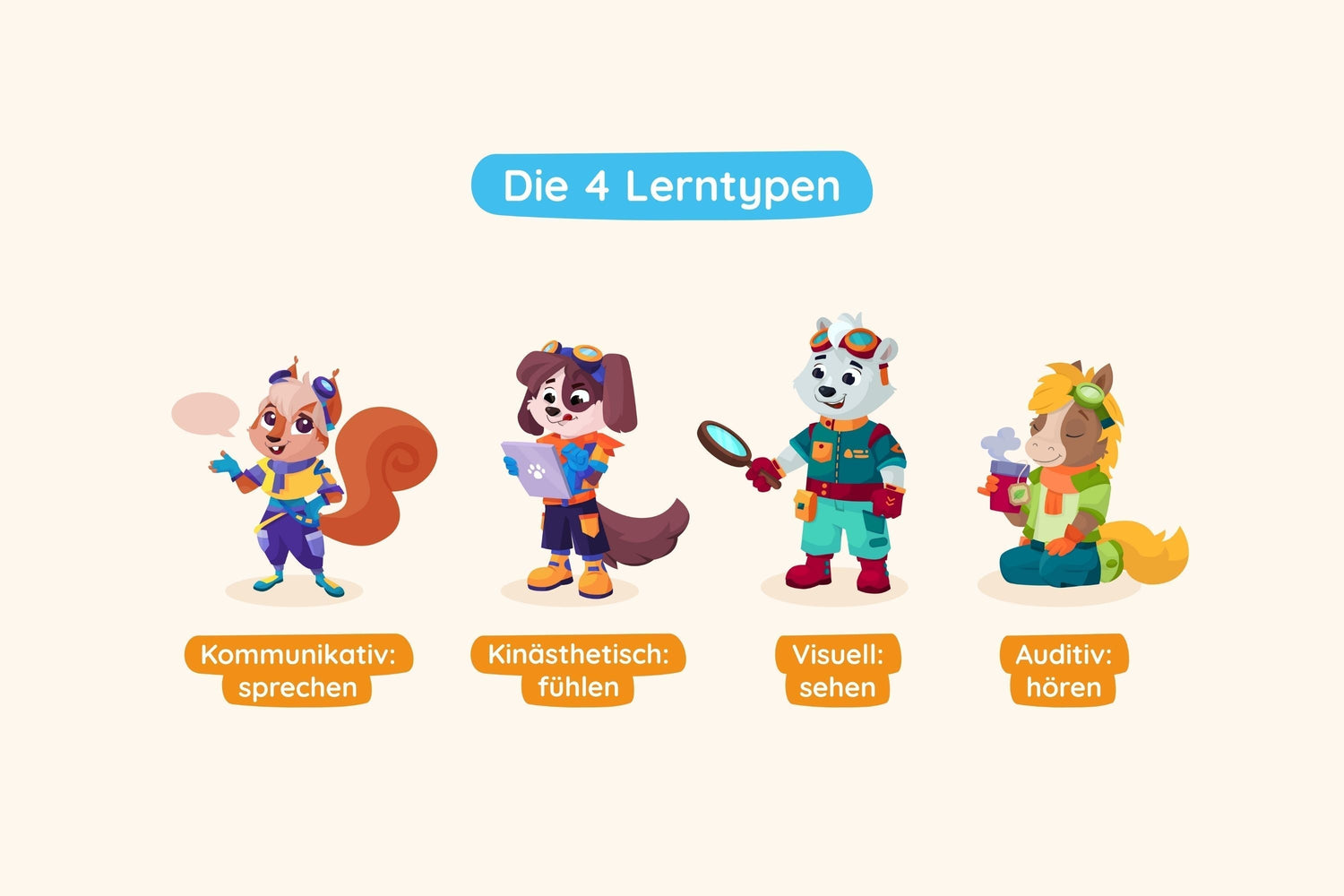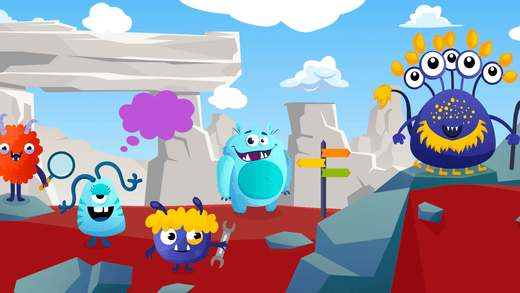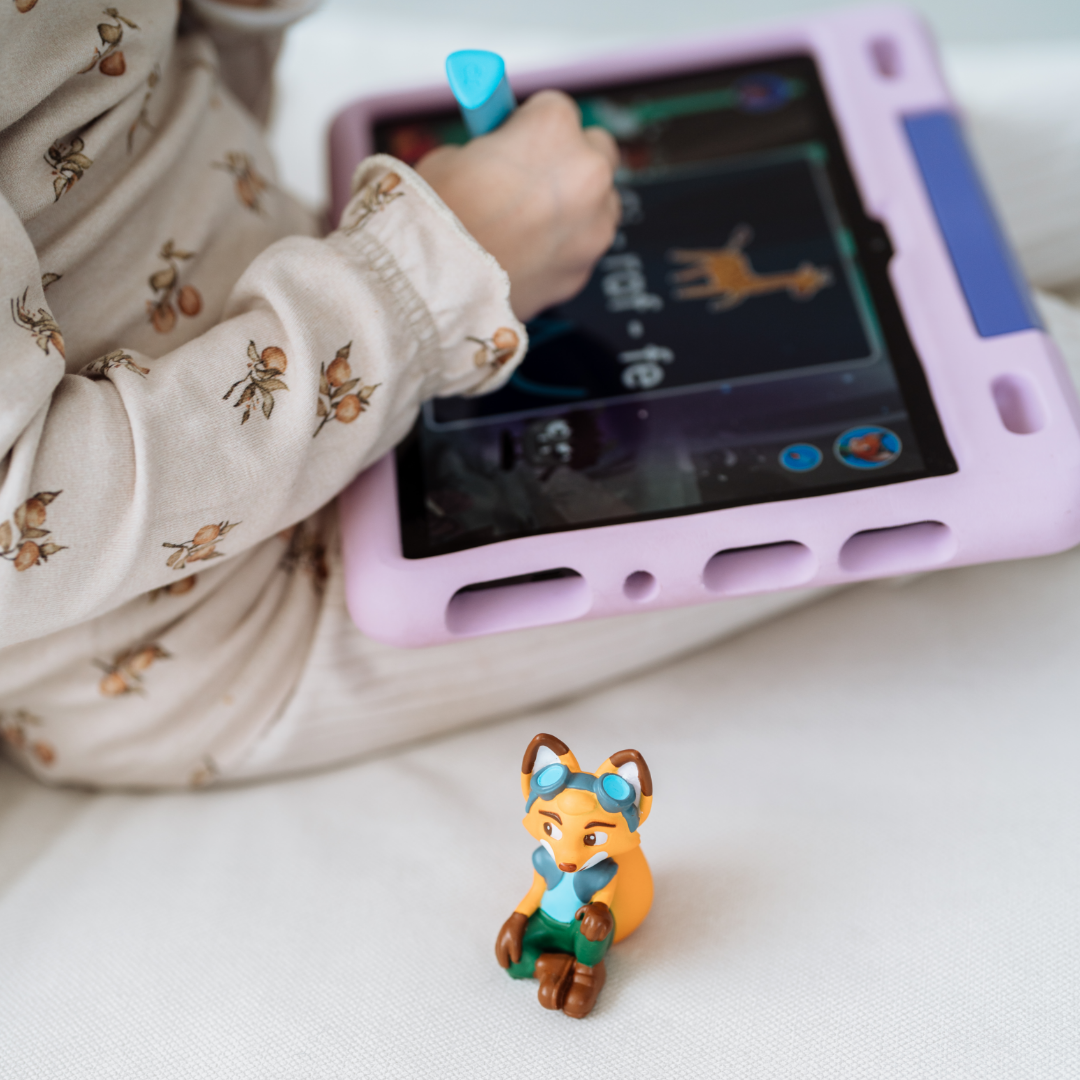What is a learning style? The foundation for effective learning
A learning style describes the preferred way in which a person absorbs, processes and stores information.
While some children learn particularly well through listening, others need visual aids or have to try things out for themselves to understand. Knowing your own learning style helps you tailor your learning process to your individual needs and make it more successful. Edurino offers various learning games and interactive tasks that appeal to different learning styles.
Hearing, smelling, seeing, feeling, tasting? What learning types are there?
The most well-known classification of learning types comes from the biochemist and learning researcher Frederic Vester. Vester originally distinguished four learning types, including an intellectual type. Today, people often talk about the communicative learning type instead, which emphasizes exchange and collaborative learning. We use this modern classification to give you the most practical tips for everyday life. In practice, these learning types rarely occur in isolation. Nevertheless, most children prefer one way of learning.
👀 Visual learner: learns best by seeing
👂🏽 Auditory learner: learns best by listening
👐🏽 Kinesthetic-motor (haptic) learning type: learns best through movement and personal experience
🗨️ Communicative learner: learns best through exchange and discussion
The 4 learning types at a glance
Many senses are involved in the learning process, and the more you engage them, the better your child will remember the content. Edurino has compiled some tips that might be particularly helpful for each learning style.
1. Visual learner
Features:
Your child remembers things more easily when they see them. Pictures, graphics, and colors help them understand. Here's how you can best help visual learners:
- Create your own pictures and drawings
- Highlight texts in color
- Working with colorful notes or index cards
- Create posters with different information on a topic
- Watch films and videos on the learning topic
2. Auditory learning type
Features:
Your child learns best by listening. They can absorb explanations well and recall what they've learned. Here's how to best help this auditory learner:
- Find a quiet place to study
- Read the learning material aloud or recite it to yourself
- Explain the learning material to others
- Have others explain the learning material orally
- Record the learning content yourself and listen to it repeatedly
- Use audiobooks rather than books
- Acquire the learning material through songs and rhymes
3. Kinesthetic-motor learning type
Features:
Your child needs movement and practical experience to grasp new things. They learn best through doing. Here's how to best support the kinesthetic-motor learning type:
- Stand up and move when you think about something
- Learning through experiments
- Ask questions and have the facts explained
- Create something yourself, e.g. make it out of clay
- Role-playing and acting
4. Communicative learning type
Features:
Your child processes information best through interaction with others. Talking, asking questions, and discussing help them learn. Here's how you can best help this communicative learner:
- Talk to others about the issues
- Consciously formulate questions about the learning content
- Discuss the topics
- Taking different perspectives on a topic
How do you recognize your child's learning type?
What are your child's learning preferences? Observe how they like to learn:
- Does he or she enjoy drawing sketches, using symbols, colors, etc.? → Visual learner
- Does your child prefer to listen and remember spoken explanations? → Auditory learner
- Does he or she move around a lot and want to touch or try things out? → Kinesthetic learning type
- Does he or she enjoy talking about what he or she has learned? → Communicative learner
Learn individually - grow together
Whether your child prefers drawing, listening, moving, or talking – the important thing is that they are allowed to find their own unique way of absorbing knowledge. If you know your child's learning style, you can help them learn with more ease and joy. Because learning works best when it fits their personality – and that's exactly where you, as a parent, can make a difference.
In addition to learning types, different learning styles also play an important role in how your child learns best.
👉 Curious? Here you'll find detailed information about learning styles and effective learning .

